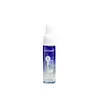What's inside
What's inside
 Key Ingredients
Key Ingredients

 Benefits
Benefits

 Concerns
Concerns

No concerns
 Ingredients Side-by-side
Ingredients Side-by-side

Water
Skin ConditioningSchizophyllum Commune/Asparagus Cochinchinensis Root/Soybean Germ Ferment Filtrate Extract
Skin ConditioningBifida Ferment Filtrate
Skin ConditioningHydroxyethyl Urea
HumectantLactobacillus Ferment Lysate
Skin ConditioningGlycerin
HumectantButylene Glycol
HumectantPentylene Glycol
Skin ConditioningPueraria Lobata Root Extract
HumectantCentella Asiatica Leaf
Skin ConditioningCentella Asiatica Leaf Extract
Skin ConditioningAlpha-Glucan Oligosaccharide
CleansingEctoin
Skin Conditioning1,2-Hexanediol
Skin ConditioningCarbomer
Emulsion StabilisingAsiaticoside
AntioxidantMadecassic Acid
Skin ConditioningAsiatic Acid
Skin ConditioningEthylhexylglycerin
Skin ConditioningMadecassoside
AntioxidantWater, Schizophyllum Commune/Asparagus Cochinchinensis Root/Soybean Germ Ferment Filtrate Extract, Bifida Ferment Filtrate, Hydroxyethyl Urea, Lactobacillus Ferment Lysate, Glycerin, Butylene Glycol, Pentylene Glycol, Pueraria Lobata Root Extract, Centella Asiatica Leaf, Centella Asiatica Leaf Extract, Alpha-Glucan Oligosaccharide, Ectoin, 1,2-Hexanediol, Carbomer, Asiaticoside, Madecassic Acid, Asiatic Acid, Ethylhexylglycerin, Madecassoside
Water
Skin ConditioningGlycerin
HumectantPalmitic Acid
EmollientC12-15 Alkyl Benzoate
AntimicrobialMyristic Acid
CleansingHydrogenated Vegetable Oil
EmollientPropylene Glycol Dicaprylate/Dicaprate
Emollient1,2-Hexanediol
Skin ConditioningNiacinamide
SmoothingCetyl Alcohol
EmollientGlyceryl Stearate Citrate
EmollientCetearyl Alcohol
EmollientHydroxyethyl Acrylate/Sodium Acryloyldimethyl Taurate Copolymer
Emulsion StabilisingMethyl Methacrylate Crosspolymer
Cetearyl Glucoside
EmulsifyingMangifera Indica Seed Butter
Skin ConditioningSodium Guaiazulene Sulfonate
Adenosine
Skin ConditioningSorbitan Isostearate
EmulsifyingDisodium EDTA
Squalane
EmollientPanthenol
Skin ConditioningMacadamia Ternifolia Seed Oil
EmollientNymphaea Caerulea Flower Extract
Skin ConditioningCaprylic/Capric Triglyceride
MaskingEthylhexylglycerin
Skin ConditioningSh-Oligopeptide-1
Skin ConditioningBrassica Campestris Sterols
EmollientCholesterol
EmollientPhytosteryl/Behenyl/Octyldodecyl Lauroyl Glutamate
Skin ConditioningTbhq
AntioxidantPolyglyceryl-10 Oleate
Skin ConditioningHydrogenated Lecithin
EmulsifyingCeramide NP
Skin ConditioningPotassium Cetyl Phosphate
EmulsifyingCeramide Ns
Skin ConditioningSilica
AbrasiveButylene Glycol
HumectantSh-Oligopeptide-2
Skin ConditioningSh-Polypeptide-1
Skin ConditioningSh-Polypeptide-11
Sh-Polypeptide-16
Skin ProtectingSh-Polypeptide-22
Skin ConditioningSh-Polypeptide-3
Skin ConditioningSh-Polypeptide-62
AntioxidantSh-Polypeptide-9
Skin ConditioningCentella Asiatica Extract
CleansingCeramide EOP
Skin ConditioningSodium Hyaluronate
HumectantPropolis Extract
Skin ConditioningAsiaticoside
AntioxidantMadecassoside
AntioxidantMadecassic Acid
Skin ConditioningAsiatic Acid
Skin ConditioningWater, Glycerin, Palmitic Acid, C12-15 Alkyl Benzoate, Myristic Acid, Hydrogenated Vegetable Oil, Propylene Glycol Dicaprylate/Dicaprate, 1,2-Hexanediol, Niacinamide, Cetyl Alcohol, Glyceryl Stearate Citrate, Cetearyl Alcohol, Hydroxyethyl Acrylate/Sodium Acryloyldimethyl Taurate Copolymer, Methyl Methacrylate Crosspolymer, Cetearyl Glucoside, Mangifera Indica Seed Butter, Sodium Guaiazulene Sulfonate, Adenosine, Sorbitan Isostearate, Disodium EDTA, Squalane, Panthenol, Macadamia Ternifolia Seed Oil, Nymphaea Caerulea Flower Extract, Caprylic/Capric Triglyceride, Ethylhexylglycerin, Sh-Oligopeptide-1, Brassica Campestris Sterols, Cholesterol, Phytosteryl/Behenyl/Octyldodecyl Lauroyl Glutamate, Tbhq, Polyglyceryl-10 Oleate, Hydrogenated Lecithin, Ceramide NP, Potassium Cetyl Phosphate, Ceramide Ns, Silica, Butylene Glycol, Sh-Oligopeptide-2, Sh-Polypeptide-1, Sh-Polypeptide-11, Sh-Polypeptide-16, Sh-Polypeptide-22, Sh-Polypeptide-3, Sh-Polypeptide-62, Sh-Polypeptide-9, Centella Asiatica Extract, Ceramide EOP, Sodium Hyaluronate, Propolis Extract, Asiaticoside, Madecassoside, Madecassic Acid, Asiatic Acid
Ingredients Explained
These ingredients are found in both products.
Ingredients higher up in an ingredient list are typically present in a larger amount.
1,2-Hexanediol is a synthetic liquid and another multi-functional powerhouse.
It is a:
- Humectant, drawing moisture into the skin
- Emollient, helping to soften skin
- Solvent, dispersing and stabilizing formulas
- Preservative booster, enhancing the antimicrobial activity of other preservatives
Asiatic Acid is a major component of Centella Asiatica Extract. It has wound-healing, anti-inflammatory, and antioxidant properties.
Studies show Asiatic Acid is able to block the pathway for skin inflammation receptors, helping to soothe skin.
As an antioxidant, asiatic acid helps protect our skin against damaging environmental factors.
Learn more about Asiatic AcidAsiaticoside comes from the super popular skin-soothing ingredient, Centella asiatica. It is one of four active compounds found in the extract of Centella Asiatica.
Asiaticoside is an antioxidant and helps with wound healing. It has been shown to increase antioxidant activity during the wound healing process.
Butylene Glycol (or BG) is used within cosmetic products for a few different reasons:
Overall, Butylene Glycol is a safe and well-rounded ingredient that works well with other ingredients.
Though this ingredient works well with most skin types, some people with sensitive skin may experience a reaction such as allergic rashes, closed comedones, or itchiness.
Learn more about Butylene GlycolEthylhexylglycerin (we can't pronounce this either) is commonly used as a preservative and skin softener. It is derived from glyceryl.
You might see Ethylhexylglycerin often paired with other preservatives such as phenoxyethanol. Ethylhexylglycerin has been found to increase the effectiveness of these other preservatives.
Glycerin is already naturally found in your skin. It helps moisturize and protect your skin.
A study from 2016 found glycerin to be more effective as a humectant than AHAs and hyaluronic acid.
As a humectant, it helps the skin stay hydrated by pulling moisture to your skin. The low molecular weight of glycerin allows it to pull moisture into the deeper layers of your skin.
Hydrated skin improves your skin barrier; Your skin barrier helps protect against irritants and bacteria.
Glycerin has also been found to have antimicrobial and antiviral properties. Due to these properties, glycerin is often used in wound and burn treatments.
In cosmetics, glycerin is usually derived from plants such as soybean or palm. However, it can also be sourced from animals, such as tallow or animal fat.
This ingredient is organic, colorless, odorless, and non-toxic.
Glycerin is the name for this ingredient in American English. British English uses Glycerol/Glycerine.
Learn more about GlycerinMadecassic Acid is a major component of Centella Asiatica Extract. It has anti-inflammatory and antioxidant properties.
It is a triterpenoid, meaning it naturally acts as an antioxidant. Antioxidants protect your skin against damage from environmental factors such as pollution and UV.
Studies show Madecassic Acid helps soothe the skin due to its ability to block inflammation pathways.
Learn more about Madecassic AcidMadecassoside comes from the super popular skin-soothing ingredient, Centella asiatica. It is one of four active compounds found in the extract of Centella Asiatica.
Madecassoside has antioxidant, anti-inflammatory, and hydrating properties. It contains fatty acids, amino acids, beta-carotene, and phytochemicals.
One study found using Madecassoside with ascorbic acid helped reduce the signs of aging and improved skin hydration.
Learn more about MadecassosideWater. It's the most common cosmetic ingredient of all. You'll usually see it at the top of ingredient lists, meaning that it makes up the largest part of the product.
So why is it so popular? Water most often acts as a solvent - this means that it helps dissolve other ingredients into the formulation.
You'll also recognize water as that liquid we all need to stay alive. If you see this, drink a glass of water. Stay hydrated!
Learn more about Water